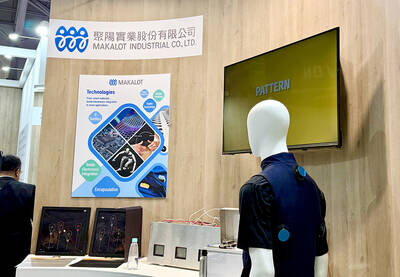Formosa Plastics Group (FPG, 台塑集團), which caused a toxic spill that killed tonnes of fish in central Vietnam last year, was fined a second time for illegally burying “harmful” waste, official sources said yesterday.
The deadly dump from Formosa’s US$11 billion steel plant in Ha Tinh Province sparked one of the nation’s worst environmental catastrophes, decimating livelihoods along swathes of coastline and prompting months of rare protests in the authoritarian country.
Formosa Ha Tinh Steel Corp (台塑河靜鋼鐵) was initially fined US$500 million for pouring toxic chemicals — including cyanide — into the ocean in April last year, and has now been ordered to pay an additional US$25,000 on separate charges of burying harmful solid waste, the Vietnamese Supreme Court’s official Cong Ly newspaper reported.
A local contractor is also to be fined US$20,000 for helping dispose of the 100m3 of waste, the paper added.
A provincial official confirmed the latest fine, without providing further details.
The waste was buried in July last year and local residents reported seeing trucks ferrying the material to a farm belonging to the contractor hired to dispose of it.
Police confirmed the waste came from Formosa and launched an investigation last year.
Officials would not comment on why it took more than a year to issue the nominal fines.
The toxic spill set off angry demonstrations against the company and the government in the one-party state that routinely jails its critics. Several activists have been arrested and convicted for their involvement in the protests, including a 22-year-old blogger who was last month jailed for seven years.
Formosa’s huge steel plant, which was under construction at the time of the disaster, was in April given a green light to resume operations after officials found it had addressed dozens of violations. Several officials were punished or fired after the disaster, which saw beaches littered with fish, including large offshore species.
Vietnam has been accused of ignoring environmental concerns on its march toward rapid development, although the issue has become central for some groups on social media.

Nvidia Corp chief executive officer Jensen Huang (黃仁勳) on Monday introduced the company’s latest supercomputer platform, featuring six new chips made by Taiwan Semiconductor Manufacturing Co (TSMC, 台積電), saying that it is now “in full production.” “If Vera Rubin is going to be in time for this year, it must be in production by now, and so, today I can tell you that Vera Rubin is in full production,” Huang said during his keynote speech at CES in Las Vegas. The rollout of six concurrent chips for Vera Rubin — the company’s next-generation artificial intelligence (AI) computing platform — marks a strategic

REVENUE PERFORMANCE: Cloud and network products, and electronic components saw strong increases, while smart consumer electronics and computing products fell Hon Hai Precision Industry Co (鴻海精密) yesterday posted 26.51 percent quarterly growth in revenue for last quarter to NT$2.6 trillion (US$82.44 billion), the strongest on record for the period and above expectations, but the company forecast a slight revenue dip this quarter due to seasonal factors. On an annual basis, revenue last quarter grew 22.07 percent, the company said. Analysts on average estimated about NT$2.4 trillion increase. Hon Hai, which assembles servers for Nvidia Corp and iPhones for Apple Inc, is expanding its capacity in the US, adding artificial intelligence (AI) server production in Wisconsin and Texas, where it operates established campuses. This

US President Donald Trump on Friday blocked US photonics firm HieFo Corp’s US$3 million acquisition of assets in New Jersey-based aerospace and defense specialist Emcore Corp, citing national security and China-related concerns. In an order released by the White House, Trump said HieFo was “controlled by a citizen of the People’s Republic of China” and that its 2024 acquisition of Emcore’s businesses led the US president to believe that it might “take action that threatens to impair the national security of the United States.” The order did not name the person or detail Trump’s concerns. “The Transaction is hereby prohibited,”

Garment maker Makalot Industrial Co (聚陽) yesterday reported lower-than-expected fourth-quarter revenue of NT$7.93 billion (US$251.44 million), down 9.48 percent from NT$8.76 billion a year earlier. On a quarterly basis, revenue fell 10.83 percent from NT$8.89 billion, company data showed. The figure was also lower than market expectations of NT$8.05 billion, according to data compiled by Yuanta Securities Investment and Consulting Co (元大投顧), which had projected NT$8.22 billion. Makalot’s revenue this quarter would likely increase by a mid-teens percentage as the industry is entering its high season, Yuanta said. Overall, Makalot’s revenue last year totaled NT$34.43 billion, down 3.08 percent from its record NT$35.52